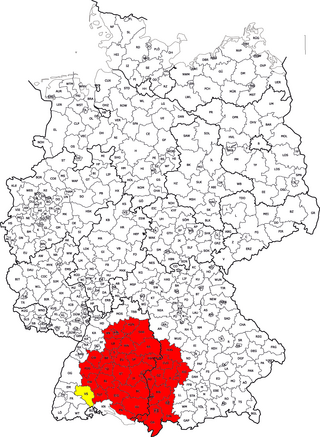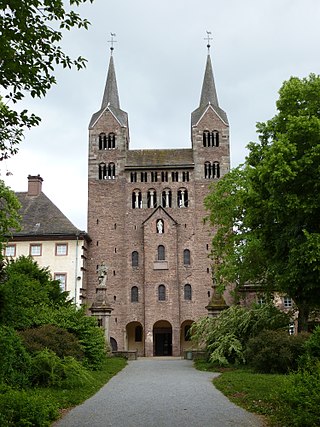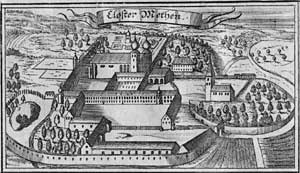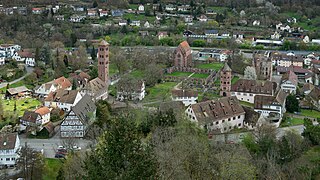Examples of Secularization in History
Ecclesiastical confiscations of Mendizábal in Spain
The Ecclesiastical confiscations of Mendizábal refer to a February 1836 decree for the Desamortización declared by Juan Álvarez Mendizábal. He was prime minister at the time of the release of the decree.
The Spanish government confiscated the property because they felt that the property was underused by the monasteries. The government saw this land as a perfect opportunity to gain wealth and increase the holdings of the nobility. The churches were not compensated for their property and were taken. Many middlemen were involved in the acquisition of the properties because the church excommunicated the auctioneers and buyers. In order for the transaction to go through to obtain the property, they had to use a third-party individual. [2]
The confiscations took place at the same time as the First Carlist War, of which there were three. The Carlist Wars were a series of civil wars in the 19th century involving Liberal-Republican factions who wanted a secular and modern government. In contrast, the traditional Carlist faction wanted to preserve ancient traditions and royalty. [3]
Josephinism in Austria
Josephinism in Austria refers to the actions of Joseph II, Holy Roman Emperor, and the transformation of the Catholic Church as subservient to the monarchy. Enlightened absolutism was a concept that spread across Continental Europe, separating church and state and putting the authority of the state out of the hands of the church. Several monasteries were seized before the French Revolution.
The French Revolution brought about a period of extremity and conflict among traditional royalists, and enlightened liberals. Joseph II had a strong aversion for monasteries that he viewed as not contributing positively to society, although he was a Catholic. Upwards of 500 out of 1,188 monasteries in Austria were taken, and 60 million florins were taken by the state. 1700 new parishes and welfare institutions were created from this wealth and property. [4]
German mediatization refers to the restructuring of German territory between 1802 and 1814 of the former Holy Roman Emperor into 39 German states, from the original 300 states and principalities. Many properties and buildings owned by the Church were confiscated and reallocated through this process. Monasteries, land, property titles, and authority were stripped from the princes and religious leaders of these German states.
The pressure of German Mediatization was not initiated by the Germans themselves, but rather by the diplomatic pressure by Napoleon and the French military [5]
The legislation that brought about the German mediatization is known as The Final Recess of the Imperial Deputation (German: Reichsdeputationshauptschluss) of 25 February 1803.
This law brought about the property restructuring of the Holy Roman Empire. By reallocating the ecclesiastical states and the imperial cities to other imperial estates, they were able to satisfy Napoleon's demands and bring about increased secularisation. [6]
Secularization of monastic estates in Romania
The Secularization of Monastic Estates in Romania refers to the confiscation of large estates owned and operated by the Eastern Orthodox Church in Romania. The land confiscated was utilized for land reform and agriculture. By confiscating monastery lands, the boyars of Romania were able to keep their estates intact while still developing the infrastructure of Romania.
The law that enacted the secularization of monastic estates in Romania was approved by the Parliament of Romania and brought about in December 1863 by Domnitor Alexandru Ioan Cuza.
Romania was then known as the Romanian United Principalities.
The monasteries were untaxed and as they composed ¼ of Romania's land, the inability to tax these lands and the Church's ownership had negative effects on the state's ability to generate revenue. [7]

Swabia is a cultural, historic and linguistic region in southwestern Germany. The name is ultimately derived from the medieval Duchy of Swabia, one of the German stem duchies, representing the territory of Alemannia, whose inhabitants interchangeably were called Alemanni or Suebi.

Maximilian Karl Joseph Franz de Paula Hieronymus de Garnerin de la Thuile, Count von Montgelas was a Bavarian statesman, a member of a noble family from the Duchy of Savoy. His father John Sigmund Garnerin, Baron Montgelas, entered the military service of Maximilian III, Elector of Bavaria, and married the Countess Ursula von Trauner. Maximilian Josef, their eldest son, was born in the Bavarian capital Munich on September 10, 1759.

The Princely Abbey of Corvey is a former Benedictine abbey and ecclesiastical principality now in North Rhine-Westphalia, Germany. It was one of the half-dozen self-ruling princely abbeys of the Holy Roman Empire from the Late Middle Ages until 1792 when Corvey was elevated to a prince-bishopric. Corvey, whose territory extended over a vast area, was in turn secularized in 1803 in the course of the German mediatisation and absorbed into the newly created Principality of Nassau-Orange-Fulda. Originally built in 822 and 885 and remodeled in the Baroque period, the abbey is an exceptional example of Carolingian architecture, the oldest surviving example of a westwork, and the oldest standing medieval structure in Westphalia. The original architecture of the abbey, with its vaulted hall and galleries encircling the main room, heavily influenced later western Romanesque and Gothic architecture. The inside of the westwork contains the only known wall paintings of ancient mythology with Christian interpretation in Carolingian times. The former abbey church was listed as a UNESCO World Heritage Site in 2014.

Metten Abbey, or St. Michael's Abbey at Metten is a house of the Benedictine Order in Metten near Deggendorf, situated between the fringes of the Bavarian Forest and the valley of the Danube, in Bavaria in Germany.

Hirsau Abbey, formerly known as Hirschau Abbey, was once one of the most important Benedictine abbeys of Germany. It is located in the Hirsau borough of Calw on the northern slopes of the Black Forest mountain range, in the present-day state of Baden-Württemberg. In the 11th and 12th century, the monastery was a centre of the Cluniac Reforms, implemented as "Hirsau Reforms" in the German lands by William of Hirsau. The complex was devastated during the War of the Palatine Succession in 1692 and not rebuilt.

Tegernsee Abbey is a former Benedictine monastery in the town and district of Tegernsee in Bavaria. Both the abbey and the town that grew up around it, are named after the Tegernsee, the lake on the shores of which they are located. The name is from the Old High German tegarin seo, meaning great lake.

Wessobrunn Abbey was a Benedictine monastery near Weilheim in Bavaria, Germany.

Göttweig Abbey is a Benedictine monastery near Krems in Lower Austria. It was founded in 1083 by Altmann, Bishop of Passau.

Weltenburg Abbey is a Benedictine monastery in Weltenburg near Kelheim on the Danube in Bavaria, Germany.

The law on the secularization of monastic estates in Romania was proposed in December 1863 by Domnitor Alexandru Ioan Cuza and approved by the Parliament of Romania. By its terms, the Romanian United Principalities confiscated the large estates owned by the Eastern Orthodox Church in Romania. One of the measures ensuring secularism and the separation of church and state, it was also designed to provide an arable land reserve for land reform, without raising the issue of boyar estates.

Rottenbuch is a municipality in the Weilheim-Schongau district, in Bavaria, Germany. It is the site of Rottenbuch Abbey church. Its name stems from a beech tree clearing; it is common in Germany to find place names based on tree clearings. The first historical mention appears in 1073 when Welf I gifts the by then already built Augustinian monastery large lands on both sides of the Ammer river. Supposedly, since around 950, some "Einsiedler" (hermits/ascetics) were already living in Rottenbuch together and following a monastic way of life.

Rot an der Rot Abbey was a Premonstratensian monastery in Rot an der Rot in Upper Swabia, Baden-Württemberg, Germany. It was the first Premonstratensian monastery in the whole of Swabia. The imposing structure of the former monastery is situated on a hill between the valleys of the rivers Rot and Haslach. The monastery church, dedicated to St Verena, and the convent buildings are an important part of the Upper Swabian Baroque Route. Apart from the actual monastic buildings, a number of other structures have been preserved among which are the gates and the economy building.

The ecclesiastical confiscations of Mendizábal, more often referred to simply as la Desamortización in Spanish, were a set of decrees that resulted in the expropriation and privatisation of monastic properties in Spain from 1835 to 1837.

The Abbey of Fulda, from 1221 the Princely Abbey of Fulda and from 1752 the Prince-Bishopric of Fulda, was a Benedictine abbey and ecclesiastical principality centered on Fulda, in the present-day German state of Hesse.

The Princely Abbey of Kempten was an ecclesiastical principality of the Holy Roman Empire for centuries until it was annexed to the Electorate of Bavaria in the course of the German mediatization in 1803.

Walter Brandmüller is a German prelate of the Catholic Church, a cardinal since 2010. He was president of the Pontifical Committee for Historical Sciences from 1998 to 2009.
The suppression of monasteries refers to various events at different times and places when monastic foundations were abolished and their possessions were appropriated by the state.

Tokwon Abbey was a Benedictine monastery of the Congregation of Missionary Benedictines of Saint Ottilien, located near the town of Wonsan in what is now North Korea. Founded as a monastic mission in Seoul, the community transferred to Tokwon in the 1920s to take charge of the newly created Apostolic Vicariate of Wonsan. The persecution of Christians in North Korea since 1949 made any church activity in the abbacy impossible. However the Territorial Abbacy of Tokwon is formally still kept as one of the few remaining territorial abbeys within the Catholic Church.
St Otmar's Abbey, Uznach, Switzerland, is a monastery of the Congregation of Missionary Benedictines of Saint Ottilien. It was established in the wake of World War I to expand the Congregation's resources beyond Germany. To this day, the monastery continues to procure funds and send personnel to Benedictine missions in the Global South. The current superior of the monastic community is Fr Adelrich Staub, Prior Administrator.

The Dominican Monastery is a former Christian monastery in Frankfurt am Main. It is the seat of Protestant Regional Association, a group of Protestant congregations and deaneries in the city, and serves as the convention site for the Synod of the Protestant Church in Hesse and Nassau, held usually twice a year. The former monastery compound includes a Lutheran church building, called the Church of the Holy Spirit.

















